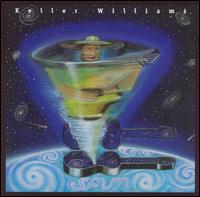HD 142990
HD 142990| 관측 데이터 에포크J2000.0이쿼녹스J2000.0 | |
|---|---|
| 별자리 | 전갈자리 |
| 적경 | 15h 58m 34.86657s[2] |
| 적위 | -24°49' 53.3617°[2] |
| 겉보기 등급(V) | 5.40 - 5.47[3] |
| 특성. | |
| 스펙트럼형 | B5 V[4] |
| U-B 색지수 | -0.65[5] |
| B-V 색지수 | -0.09[5] |
| 변수형 | SXARI[3] |
| 측성학 | |
| 고유운동(μ) | RA:-12.451±0.100[2] mas/년 Dec.:-24.582±0.061[2] mas/년 |
| 시차(ppm) | 7.0050 ± 0.0908 mas[2] |
| 거리 | 466 ± 6 ly (304 ± 2pc) |
| 세부 사항 | |
| 덩어리 | 5.7±0.1[6] M☉ |
| 반지름 | 2.80±0.04[6] R☉ |
| 광도 | 794[6] L☉ |
| 표면 중력(log g) | 4.15±0.11[6] cgs |
| 온도 | 18000±500[6] K |
| 회전 | 0.978832±0.000002 d[7] |
| 회전 속도(vsini) | 122±2km[8]/s |
| 나이 | 5.0+1.3 −1.0[9] 마이르 |
| 기타 명칭 | |
| 데이터베이스 참조 | |
| SIMBAD | 데이터. |
HD 142990(HR 5942 또는 V913 전갈자리)은 [2]전갈자리에 있는, 지구에서 약 470광년 떨어진 항성입니다.이 별은 5등급의 별이기 때문에 도시 [2]빛에서 멀리 떨어진 관측자의 육안으로 희미하게 보일 것입니다.이 별은 23.5시간 자전 주기 동안 [11][3]밝기가 5.40에서 5.47로 약간 변하는 변광성입니다.그것은 전갈자리-센타우루스자리 [12]연합의 상부 전갈자리 지역의 일원입니다.
HD 142990은 헬륨이 약한 [13]별입니다.1983년, Ermanno Borra 등은 Hβ 스펙트럼 [13]라인의 Zeeman 분할에서 항성의 강한 (~킬로가우스) 자기장을 감지했습니다.나중에 추정한 바에 따르면 필드의 강도는 수 [9]킬로가우스입니다.
HD 142990의 변동성은 1977년 홀거 페데르센과 비야른 톰센이 헬륨 약성 [14]및 헬륨 강성에 대한 분광 및 광도 측정 연구 중에 발견했습니다.1978년 이 별은 전갈자리 [15]V913이라는 변광성으로 명명되었습니다.훨씬 더 광범위한 광도 측정 데이터는 광도 곡선을 잘 샘플링한 케플러 K2 프로그램에 의해 제공되었으며, 도미니크 보우만 등이 별의 0.978832±0.000002일 자전 [7]주기를 측정할 수 있었습니다.
HD 142990의 자전 주기는 매년 약 0.6초의 속도로 감소하고 있는 것으로 보입니다.이것은 자기 유체 역학과 관련된 다른 설명이 제안되었지만,[16] 이 별이 여전히 0세 주계열로 수축하고 있다는 것을 의미할 수 있습니다.
1989년 Jeffrey Linsky 등은 HD 142990에서 6cm 전파 방출을 감지했다고 보고했으며, 이는 5분의 [17]시간 척도로 가변적으로 보였습니다.2018년 에밀 렌츠 등은 별에서 나오는 전파 방출이 원형 [18]편광이라는 것을 발견했습니다.2019년, Barnali Das et al.은 HD 142990이 200 MHz에서 일관성 있는 전자 사이클로트론 메이저 방출을 보여 당시 이 [6]메커니즘으로 방출하는 것으로 알려진 네 번째 뜨거운 자기성 별이라고 보고했습니다.
레퍼런스
- ^ "MAST: Barbara A. Mikulski Archive for Space Telescopes". Space Telescope Science Institute. Retrieved 23 February 2023.
- ^ a b c d e f g Vallenari, A.; et al. (Gaia Collaboration) (2022). "Gaia Data Release 3. Summary of the content and survey properties". Astronomy & Astrophysics. arXiv:2208.00211. doi:10.1051/0004-6361/202243940. VizieR에서 이 소스에 대한 Gaia DR3 기록.
- ^ a b c N. N. Samus; O. V. Durlevich; et al. "V913 Sco database entry". Combined General Catalog of Variable Stars (2017 ed.). CDS. Retrieved 2023-02-24.
- ^ Houk, N.; Smith-Moore, M. (1988). Michigan Catalogue of Two-dimensional Spectral Types for the HD Stars. Volume 4, Declinations -26°.0 to -12°. Department of Astronomy, University of Michigan.
- ^ a b Garrison, R. F. (March 1967). "Some Characteristics of the B and A Stars in the Upper Scorpius Complex". Astrophysical Journal. 147: 1003–1016. Bibcode:1967ApJ...147.1003G. doi:10.1086/149090. S2CID 121615150. Retrieved 25 February 2023.
- ^ a b c d e f Das, Barnali; Chandra, Poonam; Shultz, Matt E.; Wade, Gregg A. (June 2019). "Detection of Coherent Emission from the Bp Star HD 142990 at uGMRT Frequencies". The Astrophysical Journal. 877 (2): 123. arXiv:1904.08359. Bibcode:2019ApJ...877..123D. doi:10.3847/1538-4357/ab1b12. S2CID 119116341. Retrieved 25 February 2023.
- ^ a b Bowman, D. M.; Buysschaert, B.; Neiner, C.; Pápics, P. I.; Oksala, M. E.; Aerts, C. (August 2018). "K2 space photometry reveals rotational modulation and stellar pulsations in chemically peculiar A and B stars". Astronomy and Astrophysics. 616: A77. arXiv:1805.01799. Bibcode:2018A&A...616A..77B. doi:10.1051/0004-6361/201833037. S2CID 53955873. Retrieved 25 February 2023.
- ^ Shultz, M. E.; Wade, G. A.; Rivinius, Th.; Neiner, C.; Alecian, E.; Bohlender, D.; Monin, D.; Sikora, J.; MiMeS Collaboration; BinaMIcS Collaboration (January 2018). "The magnetic early B-type stars I: magnetometry and rotation". Monthly Notices of the Royal Astronomical Society. 475 (4): 5144–5178. arXiv:1801.02924. Bibcode:2018MNRAS.475.5144S. doi:10.1093/mnras/sty103. Retrieved 25 February 2023.
- ^ a b Shultz, Matthew (August 2016). The Rotational Evolution and Magnetospheric Emission of the Magnetic Early B-type Stars (PhD Thesis). Queen's University. Retrieved 25 February 2023.
- ^ "V913 Sco -- Rotating Variable". SIMBAD. Centre de données astronomiques de Strasbourg. Retrieved 2023-02-18.
- ^ "V0913 Sco". The International Variable Star Index. AAVSO. Retrieved 24 February 2023.
- ^ Bertiau, F. C. (November 1958). "Absolute Magnitudes of Stars in the Scorpio-Centaurus Association". Astrophysical Journal. 128: 533–561. Bibcode:1958ApJ...128..533B. doi:10.1086/146569. Retrieved 24 February 2023.
- ^ a b Borra, E. F.; Landstreet, J. D.; Thompson, I. (September 1983). "The magnetic fields of the helium-weak B stars". Astrophysical Journal, Suppl. Ser. 53: 151–167. Bibcode:1983ApJS...53..151B. doi:10.1086/190889. Retrieved 25 February 2023.
- ^ Pedersen, H.; Thomsen, B. (October 1977). "Spectrum and photometric variability of He-weak and He-strong stars". Astronomy and Astrophysics Suppl. Ser. 30: 11–25. Bibcode:1977A&AS...30...11P. Retrieved 25 February 2023.
- ^ Kholopov, P. N.; Kukarkina, N. P.; Perova, N. B. (April 1979). "64th Name-List of Variable Stars" (PDF). Information Bulletin on Variable Stars. 1581: 1. Bibcode:1979IBVS.1581....1K. Retrieved 25 February 2023.
- ^ Shultz, M.; Rivinius, Th.; Das, B.; Wade, G. A.; Chandra, P. (July 2019). "The accelerating rotation of the magnetic He-weak star HD 142990". Monthly Notices of the Royal Astronomical Society. 486 (4): 5558–5566. arXiv:1904.08887. Bibcode:2019MNRAS.486.5558S. doi:10.1093/mnras/stz1129. Retrieved 25 February 2023.
- ^ Linsky, J. L.; Drake, S. A.; Bastian, T. S. (March 1989). "Extension of the Class of Magnetic B Star Nonthermal Radio Sources". Bulletin of the American Astronomical Society. 21: 742. Bibcode:1989BAAS...21Q.742L. Retrieved 25 February 2023.
- ^ Lenc, Emil; Murphy, Tara; Lynch, C. R.; Kaplan, D. L.; Zhang, S. N. (August 2018). "An all-sky survey of circular polarization at 200 MHz". Monthly Notices of the Royal Astronomical Society. 478 (2): 2835–2849. arXiv:1805.05482. Bibcode:2018MNRAS.478.2835L. doi:10.1093/mnras/sty1304. Retrieved 25 February 2023.



